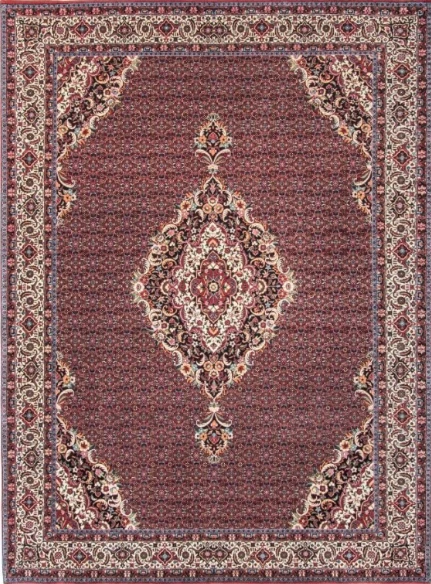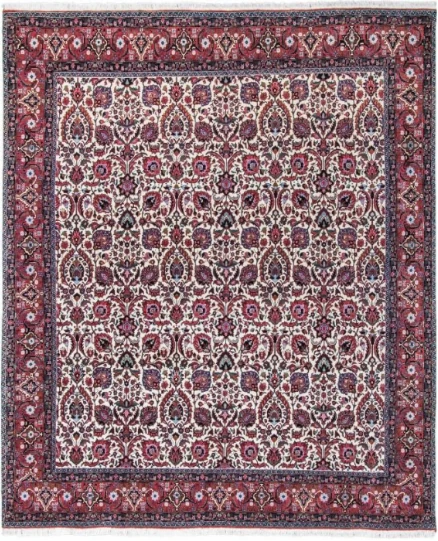Bijar (Bidjar) Rugs

Bījār is a city and capital of Bijar County,
Kurdistan Province, Iran. With an elevation
of 1,940 metres, Bijar has been called the
Roof of Iran.
The term bijar could be a variation of bajar
(i.e. city in Kurdish) and the complete name
of the city Bijar-e Garrus (city of Garrus, the
old name for the province). Among other
suggested etymologies for bijar is bid-zar
(land of willow tree), which is linguistically
unlikely.
Bijar is known internationally for its elegant
and ancient carpet and rug designs.
The main characteristics of Bijar rugs: Weave
What distinguishes the antique Bijar from
other Persian rugs is its unique construction.
Weavers used 2-3 wefts (foundation yarns
inserted from side to side) between each row of knots. The first weft was much thicker than
the second and was highly twisted. It was
inserted while damp and then pounded tightly
down with a hammer and a nail-like iron rod
inserted between the warps, resulting in a
highly compressed and durable rug.
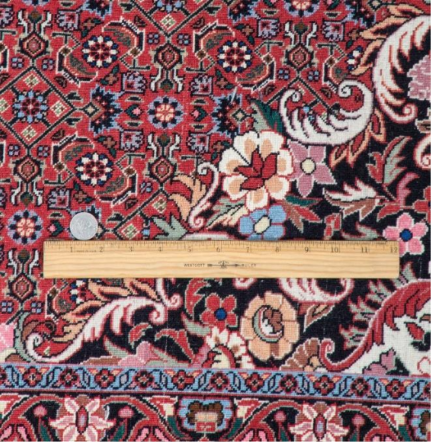
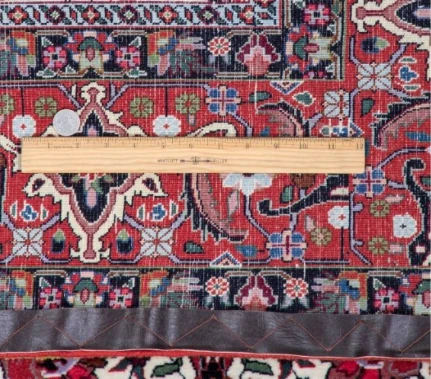
It was this type of stout construction that
earned the antique Bijar Oriental rug the
nickname of the ‘iron rug’ of Persia (Iran).
The unique construction contributed to the
extraordinary strength, coarseness, and
weight of the rugs, making them very
durable. In fact, they cannot and should not
be folded and should always be rolled for
storage or transporting.
Warp: Cotton yarn
Weft: Cotton, often 3 wefts between the rows
of knots
Pile: Wool
Knot: Symmetrical
Design and pattern
The design of the Persian Bijar Oriental rug
is not as easily identified by the repetitive use
of the same patterns as is the case with many
of the other rugs in our study of Oriental Rugs
by Design.
The diversity in the range of designs in these
rugs can be attributed to the many different
tribes that call this region home, including the
Azerbaijanis and the Turks, as well as the
influence of nearby neighboring countries
such as Turkey and the Caucasus mountain
areas.
Bijar designs are not as affected by Western
design as other rugs woven in Iran partly
because of the remoteness of the rural
mountainous area and partly because the particular religion and culture of the people has effectively isolated them from the rest ofIran.
The antique Bijar (woven prior to 1915) used some classic universal rug designs such as the Mina Khani and the Herati, as well as a diamond-shaped center
medallion
with pendants on an open field. It is important to note these classic Persian designs were subject to the interpretation of the Bijar weavers, especially those from the Kurdish villages in the region.
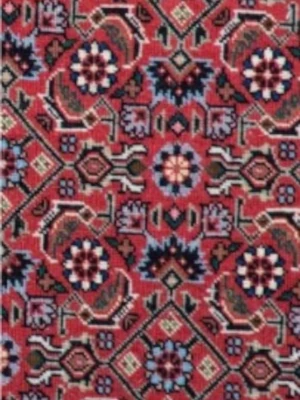
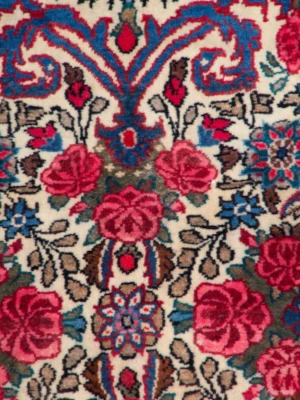
Mahi Darham or Minakhani pattern (Herati)
Golfarang pattern
The antique Bijar Oriental rug is known for its excellent artistry, dyes, construction, and craftsmanship, while those made after WWII gradually lost their quality and unique individual characteristics and morphed into a generic product that bears little resemblance to its revered predecessor.


